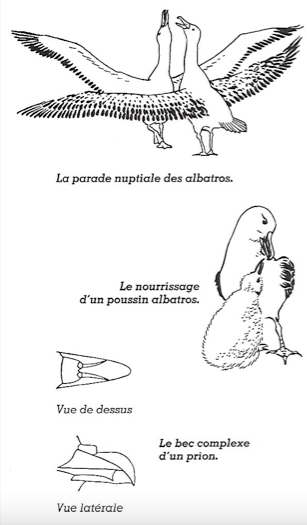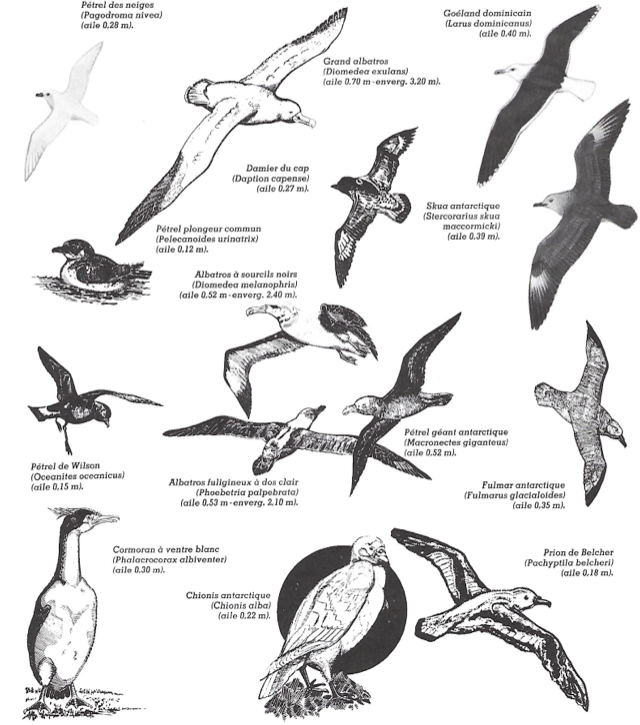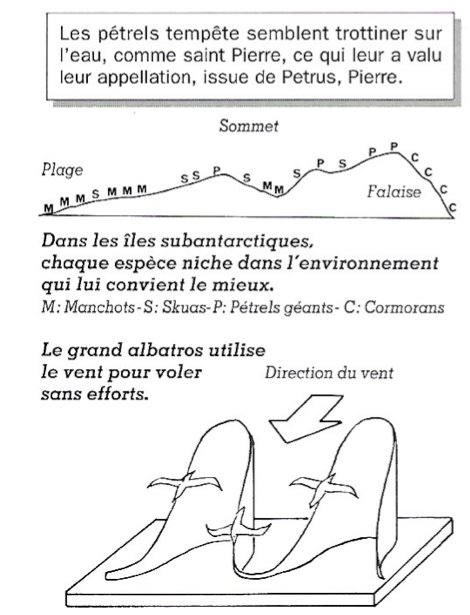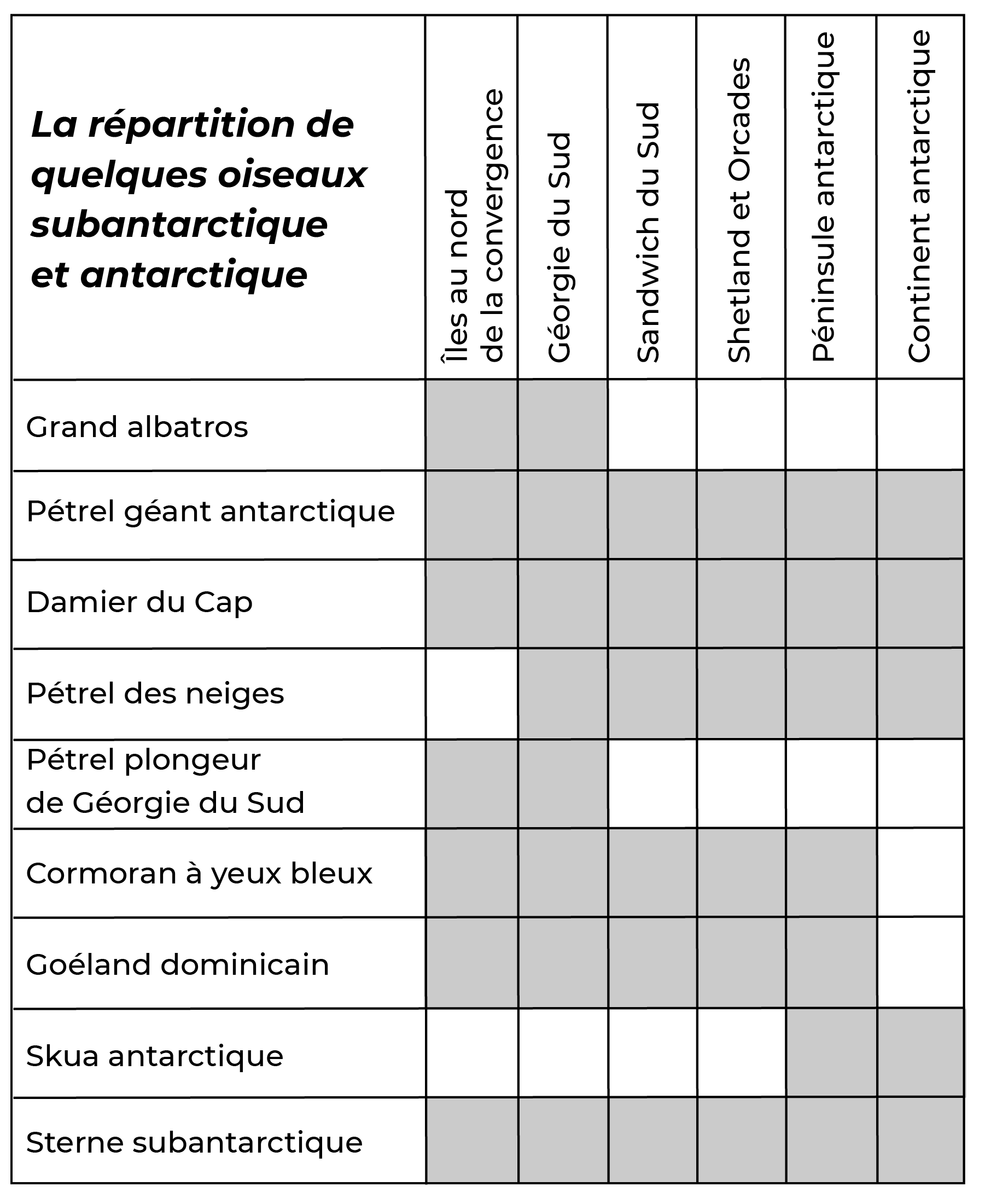Polar Encyclopædia
BIRDS OF THE AUSTRAL REGIONS

150 species of birds
50 species of birds nest in sub-Antarctic and Antarctic areas, where they take advantage of the fishy waters south of the convergence: only 43, however, breed on the Antarctic continent itself. Some birds fish near the coast (cormorants), others go offshore (penguins, diving petrels) or fly over the open sea (albatrosses, shearwaters, petrels). All these birds feed mainly on krill and squid and fish.
Feeding strategies differ .... Albatrosses, petrels and fulmars skim the surface; cormorants, penguins and diving petrels pursue their food at depth.
A few birds are scavengers (skuas, giant petrels) or follow boats in search of detritus (great albatross, giant petrel, Cape checkerspot).

Southern species, unlike their relatives in boreal regions, nest on rare isolated islands and narrow ice-free coastal bangs. All breed on land, sometimes after long seasonal migrations, but each in its own environment: cormorants on rocky overhangs, albatrosses on grassy slopes, petrels in burrows, etc. Most often, seabirds look alike in colonies (thousands to millions of birds! ).

Petrels and albatrosses
Petrels and albatrosses are the most numerous austral birds. Their beaks bear tubular nostrils that allow them to excrete excess salt through supraorbital glands, also called salt glands. Petrels spend the winter at sea, except for those that breed during this season. Albatrosses are excellent gliders, whose huge wings (up to more than 3 meters in span in the great albatross) rely on updrafts; swooping flights allow them to ascend almost effortlessly, taking advantage of their kinetic energy. Not all birds, however, are giants: the smallest, the storm petrel, weighs only 30 grams.

Among other families
Among other families, the white-bellied cormorant (Falkland and Tierra del Fuego) and the blue-eyed cormorant (from Georgia to the Peninsula) live along the coast, as do the Dominican gull (the only one of its family to breed in Antarctica), the Antarctic tern, the Antarctic and subantarctic skuas, and the Antarctic chionis. Terns and skuas are highly migratory.
For more details :
Books
- Guide des oiseaux et des mammifères (Prévost;Mougin)
- L'Antarctique (Trad. Avérous/Mazin)
- Livre de Greenpeace (May)
- Atlas de la vie sauvage (Ed. René Malherbe)
- Grand Atlas Universalis de la Mer
Support the project with a donation
The Polar POD expedition is one of the stamp of the pioners, a human adventure coupled with a technological challenge, an oceanographic exploration never before carried out which will mark a milestone in the discovery of the oceans.
Thank you for your support !